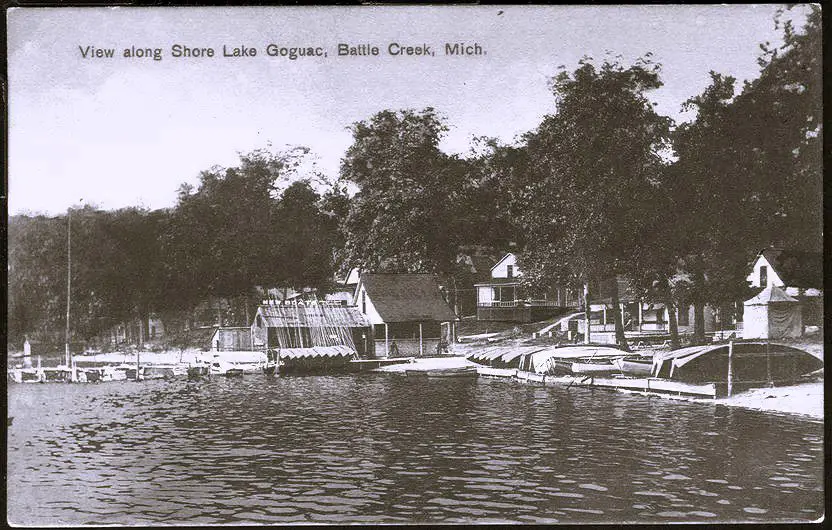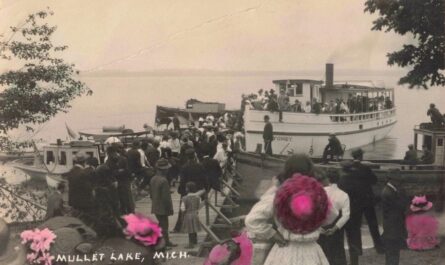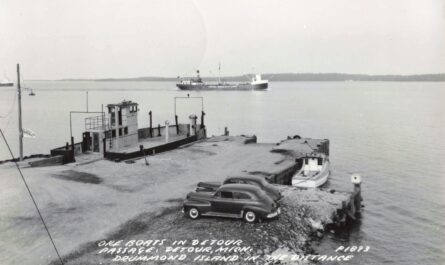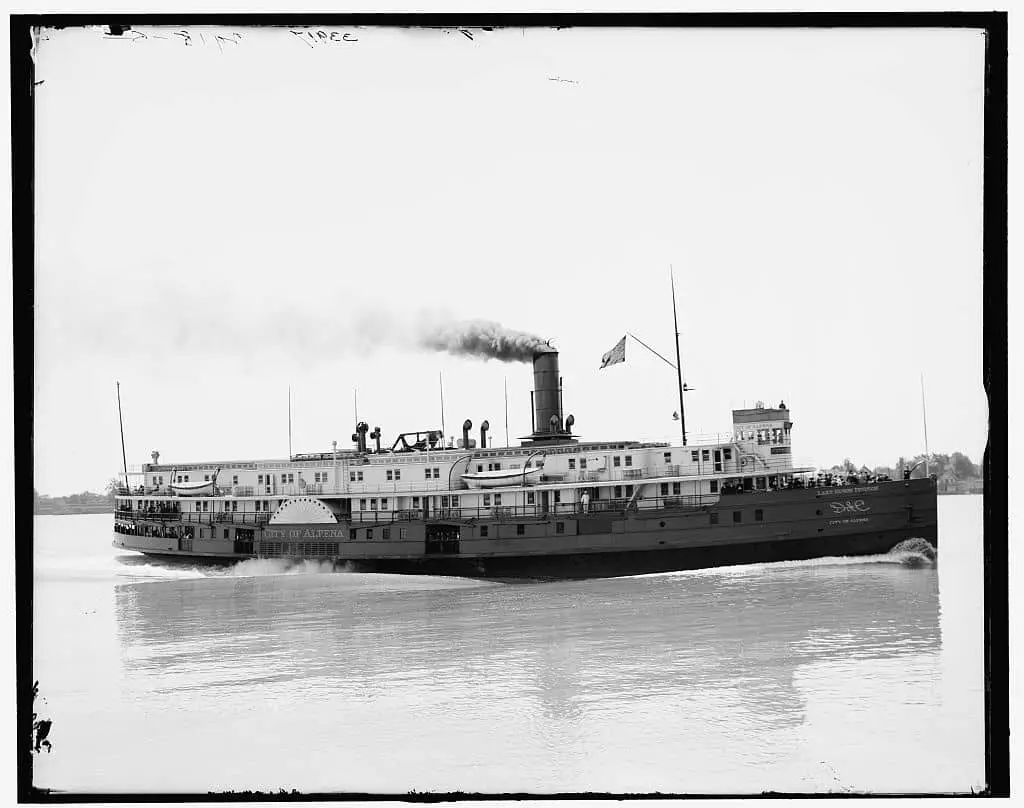Set inside Battle Creek, Goguac Lake is a 352-acre glacial kettle with three small islands. For generations, it served as the city’s front porch, from Potawatomi gatherings to a resort era with a twin-tower pavilion and a 1907 wooden roller coaster. Winters brought ice harvesting and fast iceboats; summers drew launches, picnics, and—starting in 1928—the Goguac Lake Swim. The history of Goguac Lake, Michigan, shows how a small lake shaped everyday life in a growing Midwestern city.
Video – Coaster, Ice Boats and Cottages – History of Goguac Lake
A Kettle Lake of Ice and Time
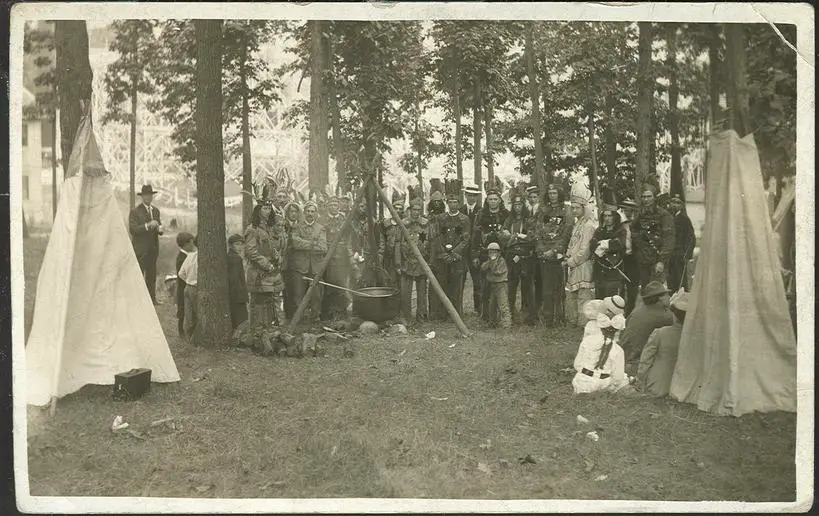
The lake is a glacial kettle, a bowl left by the last ice sheet. Long before resorts and streetcars, Potawatomi families gathered at this shore. Early settlers noted the rolling ground around the lake, which influenced the name, spelled variously. Those quiet beginnings set the stage for everything that followed in the History of Goguac Lake Michigan.
Surby’s Idea Becomes a Park
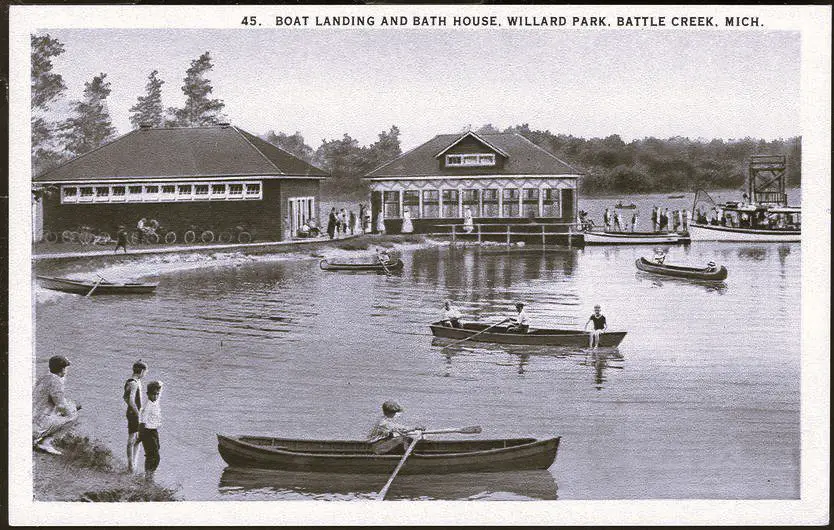
After the Civil War, R. W. Surby opened a boathouse and pier on the north shore. People came for rowboats, music, and cool air. As Battle Creek grew, so did the lakeside attraction. Over the years, it took on new names—Surby’s Park, Lakeview Park, and Liberty Amusement Park—but the promise stayed the same: come out for a day and leave town cares behind.
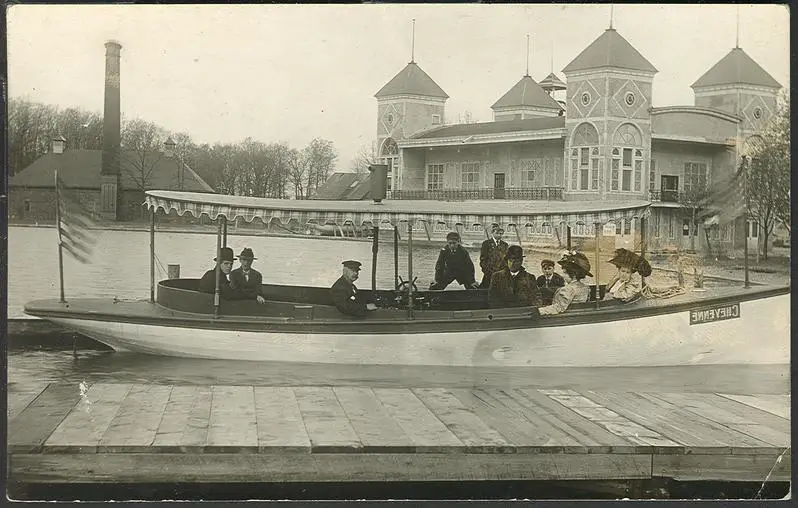
Families arrived by boat launch and, later, by streetcar. Postcards from 1910 to the 1920s show long finger piers and a low island framed by oaks. These are the best visual guides to the History of Gouac Lake, Michigan, because they show how the place actually looked when it was most alive.
A Pavilion with Towers and a Roller Coaster
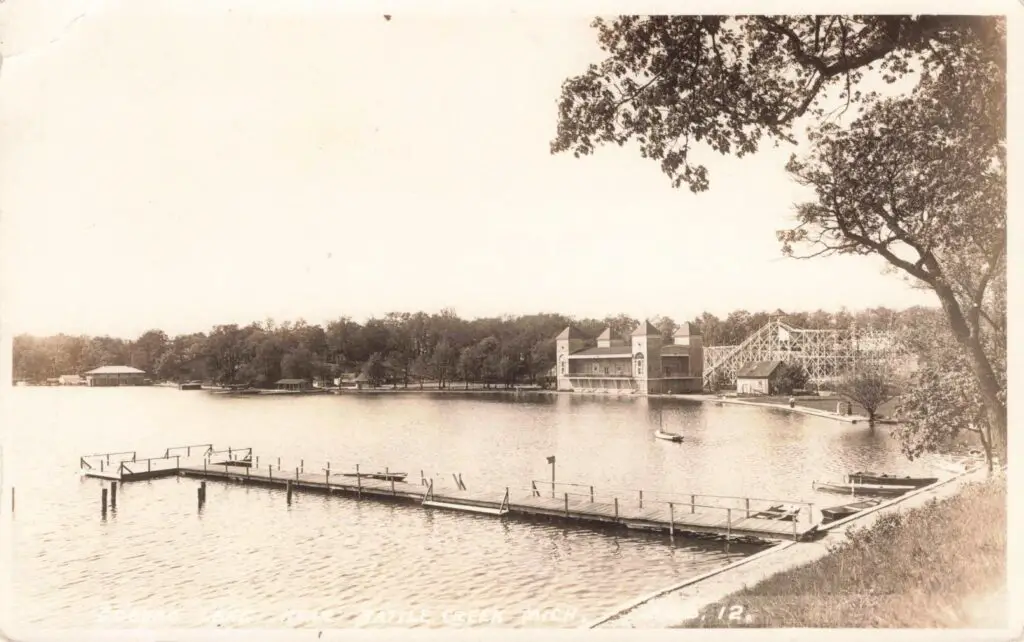
By 1907, a wooden roller coaster rose beside a grand two-story pavilion with twin towers and a broad balcony. On warm nights, dance bands filled the hall and the sound carried across the water. The lift clacked, the train dropped, and laughter rolled over the bay.
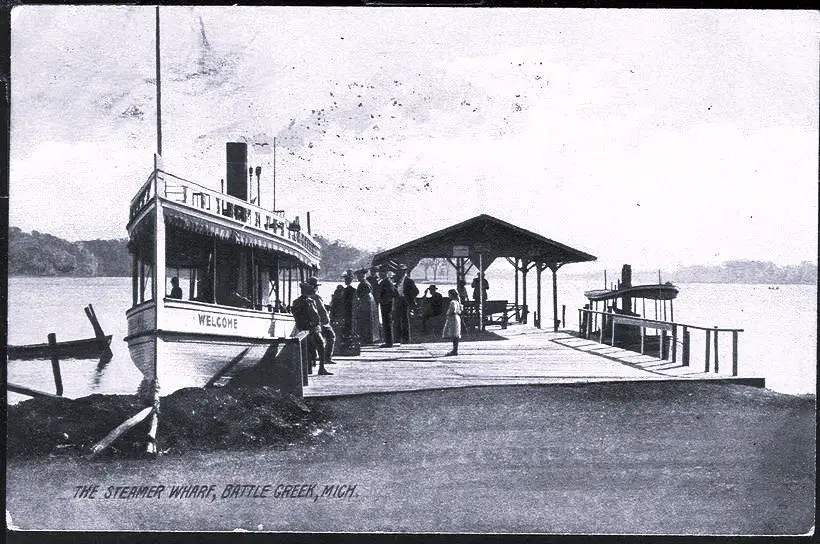
Small launches, including one labeled Cheyenne of Battle Creek, ferried visitors across the lake and idled at the docks with flags snapping in the breeze. A novelty photo booth let people pose as steamship captains in front of painted funnels and life rings marked “GOGUAC.” The images are lighthearted and clear. They show a working resort where locals and visitors shared the same shoreline.
Winter Work and Winter Play
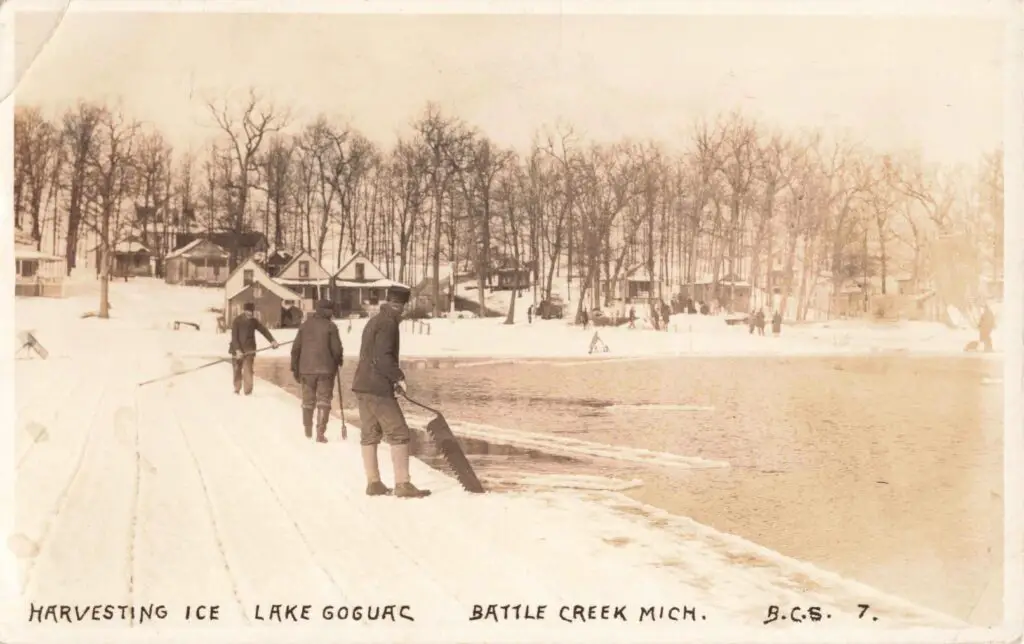
Summer was not the only season that mattered. Before mechanical refrigeration, crews scored the lake ice into neat grids and cut blocks with long saws. They guided each slab to shore for storage and city use. It was cold work done with steady hands.
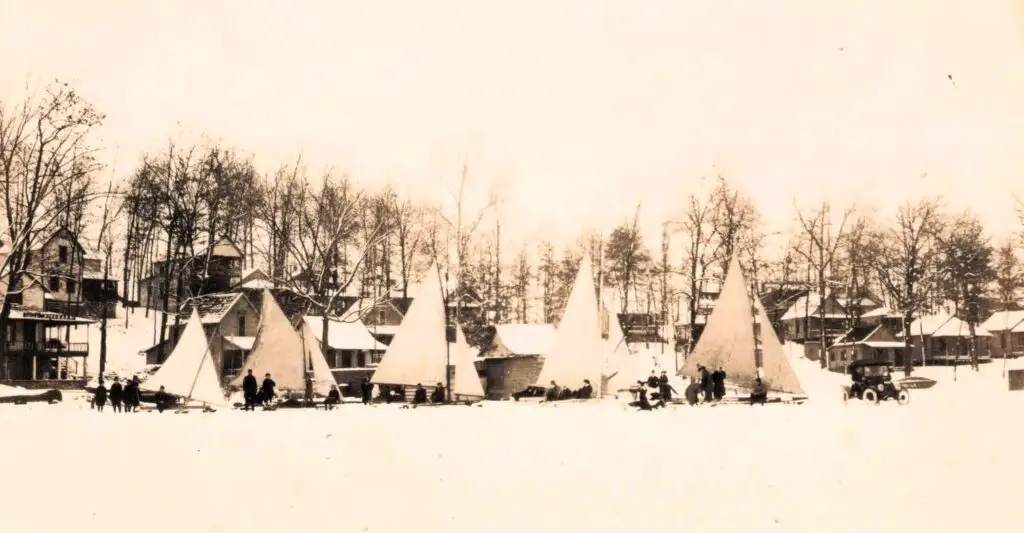
On other winter days, iceboats stood in rows along the beach. When the wind came up, the boats leaped forward and their runners shrieked across the surface. One postcard carried a simple note—“Ten below”—above a line of sails and bundled figures. Scenes like these are essential to the History of Goguac Lake, Michigan, because they show how the lake served both labor and sport.
Willard Beach and Community Traditions
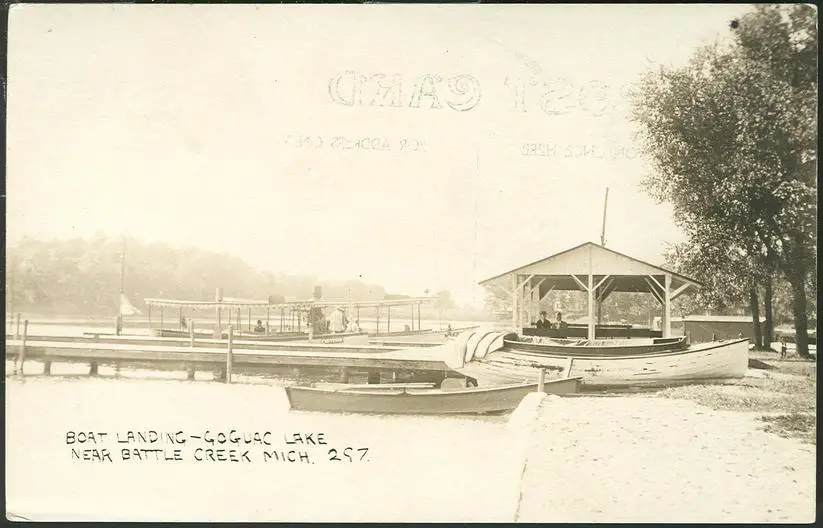
Public and private uses grew side by side. Willard Beach opened on the east shore as a city swimming area, while the Battle Creek Country Club provided private recreation nearby. Church outings, workplace picnics, and weekend races filled the calendar. In 1928, swimmers lined up for the first Goguac Lake Swim. The course ran across open water and past an island, and the finish drew cheers at the beach. The race returned year after year, becoming a local ritual. It was the kind of event that turned a lake into common ground.
After the Midway Lights Faded
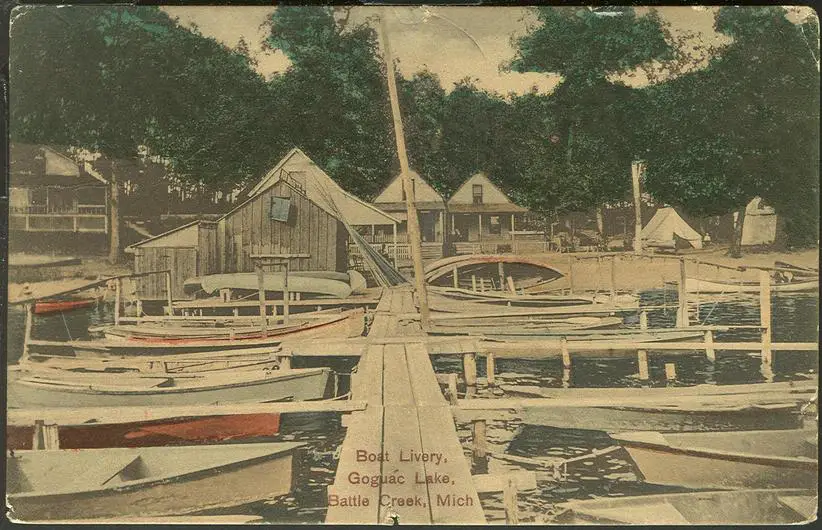
By the early 1930s, the amusement park era ended. The coaster came down, and the pavilion went quiet. The rise of cars and changing tastes drew attention to other lakes and other entertainments. Cottages multiplied around Goguac. Public access was limited to a few windows on the water, but the draw remained.
Families posed on porch steps for long photographs—faces serious, feet bare, shirtsleeves rolled. Those images feel close to life: ordinary people standing at ease on a summer afternoon. They are part of the History of Goguac Lake Michigan because they mark the steady shift from public park to neighborhood water.
Fishing, Islands, and Everyday Use
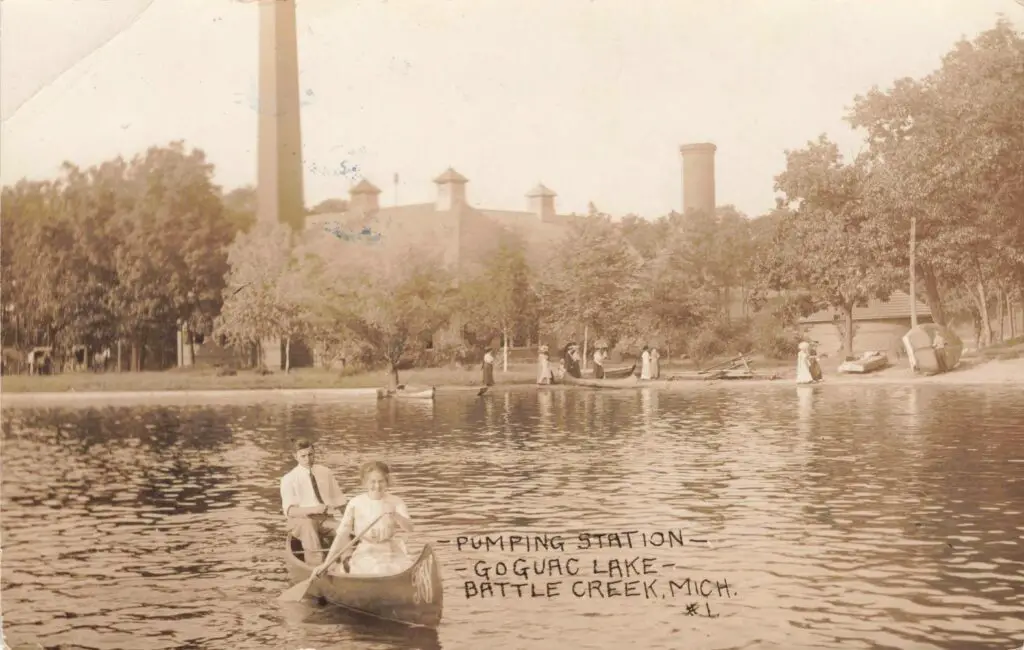
State records document stocking and surveys over many decades. Anglers work weedlines for largemouth bass, pike, panfish, and the occasional walleye. Three small islands carry names that changed with owners and uses—picnics, boat clubs, and seasonal cottages. A public launch and Willard Beach keep the water open to the city. On a typical evening, you will see a small open boat nosing past the point, a few paddlers near shore, and kids skipping stones where the waves fold in.
Why This Lake Matters
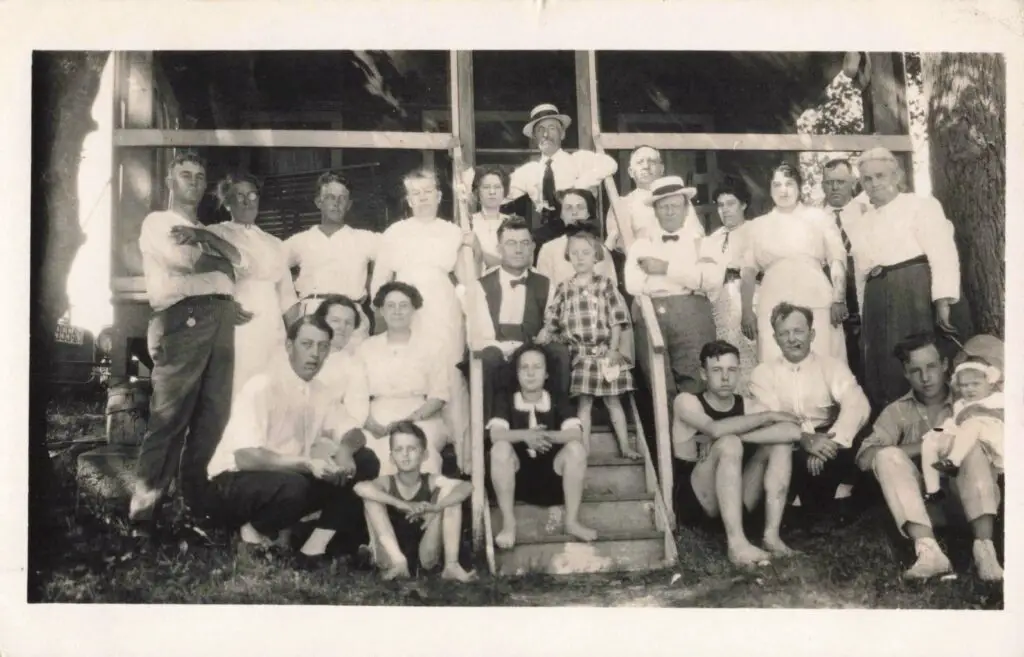
Goguac is not the largest or the wildest lake in Michigan. It does not need to be. Its power comes from proximity and continuity. For more than a century, this water has given Battle Creek a stage for ordinary life: date nights at the pavilion, church picnics under the oaks, kids shivering at the end of a wooden pier, and crews working the ice in January. The History of Goguac Lake Michigan is a guide to how a city used the time it had.
Plan Your Own Look Back
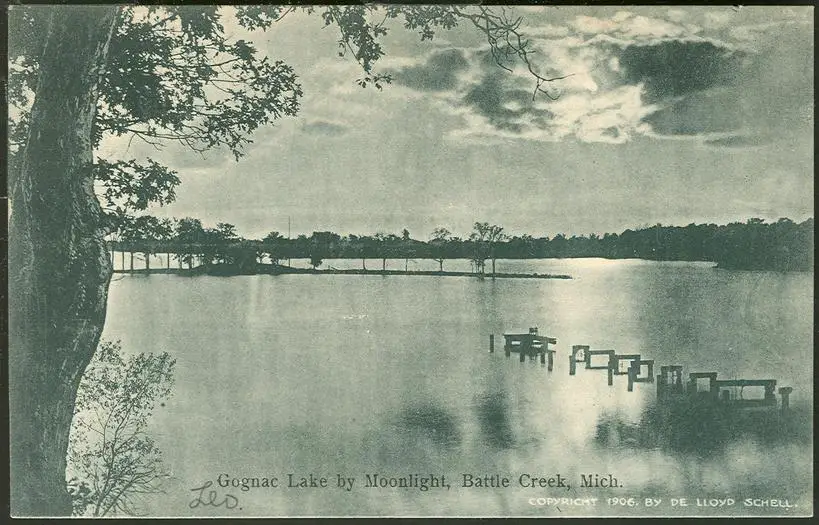
Stand at Willard Beach near dusk. Look left, where the pavilion once stood. Picture the balcony lit for a summer dance and the coaster’s white lattice rising behind it. Glance toward the islands and imagine swimmers rounding the turn in the first 1928 race. Then look down at the water at your feet. The ripples are the same ones that carried the launch Cheyenne and froze under the long saws of ice cutters. If you listen, you might hear the faint echo of a band and a small engine ticking at a pier.
Works Cited
- Battle Creek Enquirer: “90th Goguac Lake Swim” Background.
- Coasterpedia: “Lakeview Park (Michigan)”.
- Goguac Lake Association: History.
- Historical Society of Battle Creek: Geology Overview.
- Michigan DNR: “Status of the Fishery Resource Report – Goguac Lake” (PDF).
- WaterWinterWonderland: Liberty Amusement Park, Battle Creek, MI.
- WBCK: “Roller Coaster Set to Open at Battle Creek Amusement Park”.
- WBCK: “We Think This Was the Only Roller Coaster Ever in Battle Creek”.
- Wikipedia: Goguac Lake.
- Journey to the Past: “Willard Name in Battle Creek, Michigan”.
